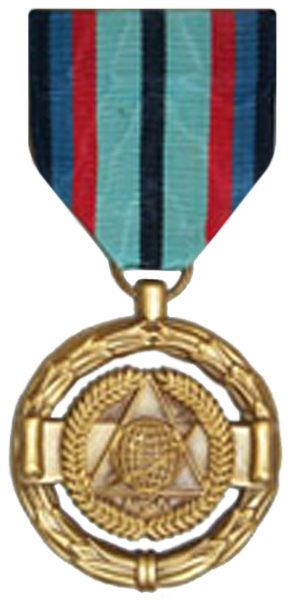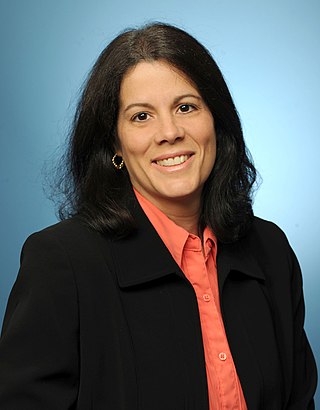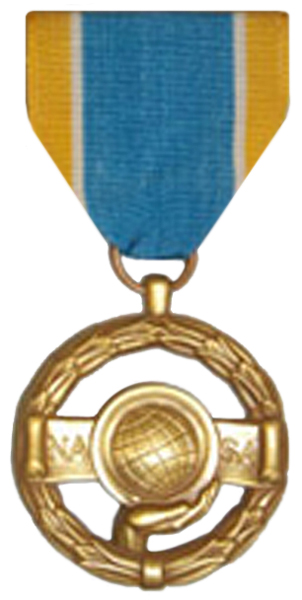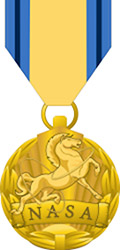
The Goddard Space Flight Center (GSFC) is a major NASA space research laboratory located approximately 6.5 miles (10.5 km) northeast of Washington, D.C. in Greenbelt, Maryland, United States. Established on May 1, 1959 as NASA's first space flight center, GSFC employs approximately 10,000 civil servants and contractors. Named in recognition of American rocket propulsion pioneer Robert H. Goddard, it is one of ten major NASA field centers. GSFC is partially within the former Goddard census-designated place; it has a Greenbelt mailing address.

Piers John Sellers was a British-American meteorologist, NASA astronaut and Director of the Earth Science Division at NASA/GSFC. He was a veteran of three Space Shuttle missions. Sellers attended Cranbrook School, Cranbrook, Kent, United Kingdom, until 1973, and achieved a bachelor's degree in ecological science from the University of Edinburgh in 1976. In 1981 he gained a doctorate in biometeorology from the University of Leeds. In 2011, Sellers retired from the NASA Astronaut Corps.

The NASA Exceptional Achievement Medal is an award of the National Aeronautics and Space Administration established in 1991. The medal is awarded to both civilian members of NASA and military astronauts.

Orlando Figueroa, previously the NASA Mars Czar Director for Mars Exploration and the Director for the Solar System Division in the Office of Space Science at NASA Headquarters and the Deputy Center Director for Science and Technology of the Goddard Space Flight Center. He has since retired in 2010 from NASA.

Olga D. González-Sanabria is a Puerto Rican scientist and inventor. She is the highest-ranking Hispanic at NASA Glenn Research Center, and a member of the Ohio Women's Hall of Fame. González-Sanabria, Director of the Engineering and Technical Services, is responsible for planning and directing a full range of integrated services including engineering, fabrication, testing, facility management and aircraft services for the Glenn Research Center. She played an instrumental role in the development of the "Long Cycle-Life Nickel-Hydrogen Batteries" which helps enable the International Space Station power system.

Amri Hernández-Pellerano is a Puerto Rican electronics engineer and scientist who designs, builds and tests the electronics that will regulate the solar array power in order to charge the spacecraft battery and distribute power to the different loads or users inside various spacecraft at NASA's Goddard Space Flight Center. She designed the power systems electronics for the Wilkinson Microwave Anisotropy Probe (WMAP) mission. WMAP is a NASA Explorer mission spacecraft which measures the temperature of the cosmic background radiation over the full sky with unprecedented accuracy.

Dr. Kimberly A. Weaver is an American astrophysics astronomer and professor. She has worked with NASA on several research projects. She is often seen on television programs about astronomy. She is an expert in the area of x-ray astronomy.

The Silver Snoopy award is a special honor awarded to NASA employees and contractors for outstanding achievements related to human flight safety or mission success. The award certificate states that it is "In Appreciation" "For professionalism, dedication and outstanding support that greatly enhanced space flight safety and mission success." The award depicts Snoopy, a character from the Peanuts comic strip created by Charles M. Schulz.

Goddard Space Flight Center is NASA's first, and oldest, space center. It is named after Robert H. Goddard, the father of modern rocketry. Throughout its history, the center has managed, developed, and operated many notable missions, including the Cosmic Background Explorer, the Hubble Space Telescope, the Tracking and Data Relay Satellite System (TDRSS), the Lunar Reconnaissance Orbiter, and the Solar Dynamics Observatory.

NASA's Exceptional Public Service Medal is a United States government awarded to any non-Government individual or to an individual who was not a Government employee during the period in which the service was performed for sustained performance that embodies multiple contributions on NASA projects, programs, or initiatives.

W. James (Jim) Adams served as the Deputy Chief Technologist at NASA in the Office of the Chief Technologist (OCT) from 2012 until retiring from NASA in 2016. NASA's OCT is responsible for direct management of NASA's space technology programs and for coordination and tracking of all technology investments across the agency.

Tecwyn Roberts was a Welsh spaceflight engineer who in the 1960s played important roles in designing the Mission Control Center at NASA's Johnson Space Center in Houston, Texas and creating NASA's worldwide tracking and communications network.
Paul D. Lowman was a geophysicist in the Geodynamics Branch of the Laboratory for Terrestrial Physics at the Goddard Space Flight Center (GSFC) in Greenbelt, Maryland. Throughout his long career, he had worked in the fields of comparative planetology, geology, neotectonics, and remote sensing.

Aprille J. Ericsson-Jackson is an American aerospace engineer. Ericsson-Jackson is the first African-American woman to receive a Ph.D. in mechanical engineering from Howard University and the first African-American woman to receive a Ph.D. in Engineering at the National Aeronautics and Space Administration (NASA) Goddard Space Flight Center (GSFC).

Susan G. Finley, a native Californian, has been an employee of NASA's Jet Propulsion Laboratory (JPL) since January 1958, making her the longest-serving woman in NASA. Two days before Explorer 1 was launched, Finley began her career with the laboratory as a human computer, calculating rocket launch trajectories by hand. She now serves as a subsystem engineer for NASA's Deep Space Network (DSN). At JPL, she has participated in the exploration of the Moon, the Sun, all the planets, and other bodies in the Solar System.

Carrie Anderson is an American planetary scientist at NASA's Goddard Space Flight Center.

Claire Lucille Parkinson is an American Earth scientist and climatologist at NASA's Goddard Space Flight Center.

Barbara Jaylee Montague Burley Mead was an American astronomer with a long career at NASA's Goddard Space Flight Center. She was also a noted arts patron, a major donor to theatres and cultural organizations in the Washington, D.C. area.
















